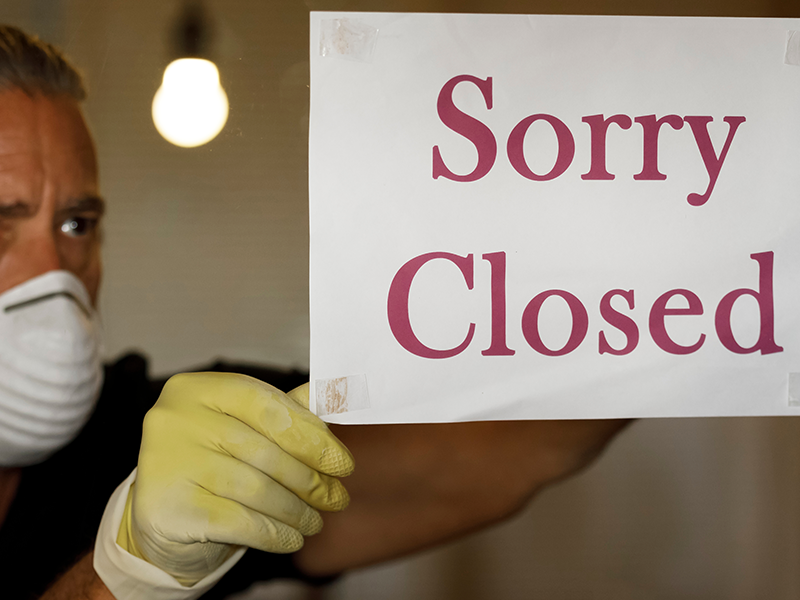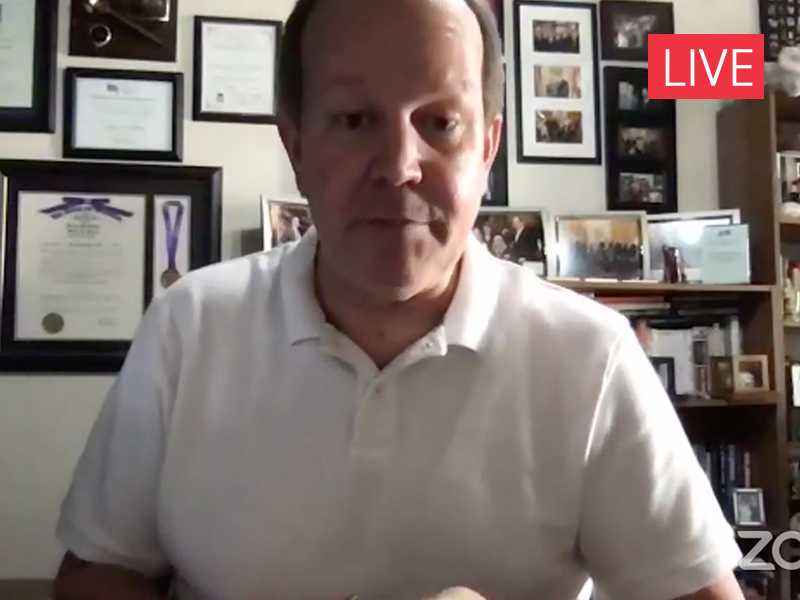
Fostering is the best example of civil society in action
Fostering is the best example of civil society in action
Yesterday we received no less than four video calls from different people working for a child in our care. Each reached out to meet a different need in the life of this child who has been thrust into an un-ideal situation. A child who may feel disconnected, abandoned, and unwanted.
The Effort Of Many
 For a child in foster care they will experience the generosity, the love, the care, and the effort of many people. A single kid in care could have come into contact with as many as a dozen individuals working for that child’s well-being. This could be a social worker, a receiving care family, foster parents, a lawyer, a judge, a CASA, biological parents, support services, a non-profit care worker, prospective adoptive parents, and even foster care support families. All of these are people ideally working for the betterment of the kid in care. Plain and simple, foster care is the best example of what it looks like when communities come together to meet a felt need.
For a child in foster care they will experience the generosity, the love, the care, and the effort of many people. A single kid in care could have come into contact with as many as a dozen individuals working for that child’s well-being. This could be a social worker, a receiving care family, foster parents, a lawyer, a judge, a CASA, biological parents, support services, a non-profit care worker, prospective adoptive parents, and even foster care support families. All of these are people ideally working for the betterment of the kid in care. Plain and simple, foster care is the best example of what it looks like when communities come together to meet a felt need.
Many of these individuals are seen but there are unseen forces all working towards the betterment and support of a kid in care. It is a broad acknowledgment that it takes the entire work of civil society to properly meet the needs of those around us. A unique understanding that while the government can do much to provide safety nets, it is only fully possible by the support of a community of people around it.
Why must so many come around this need for foster care? Because the issue is nuanced. Each child’s story is played out differently. Each child’s needs must be addressed at a human level. Their stories do not always fit on a spreadsheet or plan of action. Instead, the support systems that will lead to their success are best kept in the hands of those able to adapt and care.

Four Organizations Leading To One Goal
There are so many stories and organizations at play to keep the system working the way intended.
Organizations like that of Connection Homes, who provide necessary mentoring and support to children experiencing brokenness.
Or that of Foster Care Alliance who respond to the needs of the many single mom’s dealing with issues keeping them from properly caring for their child. These mothers desire to do well for their children but lack the skills or understanding to do so.
And what about the foster family? Nearly 50 percent of foster parents quit within one year of taking on the role in the US. That is why organizations like Project 686 are working to support foster care families – giving resources necessary to carry on.
Then there are groups like Faithbridge Foster Care who meet the needs of the child by connecting local churches to local kids in the foster system. This ensures that the community connection of that child stays intact.
Four very different organizations, working toward one goal…wholeness of the child.
Celebrating Those Who Care
As we close out May and foster care awareness month in the US, we are reminded of the many people who voluntarily reach out to provide a holistic approach of restoring children. Individuals who are compelled purely by love to care for those around them. This often is in stark contrast to the selfish picture painted by some about society. The truth is there are millions willing to ensure that all people are taken care of. It is those who step up who show the true morality of its people and create strong communities.
We here at the Georgia Center for Opportunity have highlighted groups and individuals that have shown this compassion. Groups that identified a need and responded in kind. When we discuss civil society, these individuals come to mind. They show us what true morality looks like.
Do you have a story of a foster parent you would like to celebrate? If so we want to hear it.

Reopening Isn’t About Haircuts, It’s About Relieving Human Suffering
Reopening Isn’t About Haircuts, It’s About Relieving Human Suffering
Georgia recently began the long process of reopening its economy in the wake of what it is hoped will be the worst of the COVID-19 pandemic.
Beginning in late April, certain categories of businesses were allowed to open in Georgia, including restaurants and barber shops. The encouraging news is that infection rates have not spiked and, instead, are flattening and even declining.
Many are concerned that we’re moving too early, too fast — and that safety will take a back seat. That worry is understandable. The toll of the virus in suffering and loss of life is indescribable, as thousands of families are affected in ways they will never forget.
On the other side, many are clamoring for even quicker action to get people back to work.
In truth, both sides have it right. Our first priority should be health. Clearly, that trumps all. But a key aspect of health is not just avoiding a virus, but the full spectrum of human well-being and flourishing. And to achieve that, we can’t afford to remain on lockdown much longer.
We clearly know the economic devastation wrought by the virus: About half of low-income households have reported job or wage loss due to the coronavirus. These job losses could be felt for years as families struggle to get back on their feet — or are never able to at all, plunging them into poverty.
The toll is real. I’m thinking of young moms like Jessica (not her real name to protect her identity), who had been living in her car with her small child as a result of work cutbacks and being evicted. Stories like this one are countless.
But what about the toll on mental health and general well-being? The picture is beginning to emerge, and it’s not pretty. In fact, we are facing a public mental health crisis.
A recent Kaiser Family Foundation survey found that more than half of U.S. adults (56 percent) report that worry related to the coronavirus outbreak has caused them stress-induced symptoms like insomnia, poor appetite or overeating, or frequent headaches or stomach aches.
That’s only the beginning. We have also seen the effects of social isolation in a 1,000 percent increase in calls to distress hotlines in April alone.
Rates of substance abuse and suicide will doubtless skyrocket. One analysis predicts that if the United States reaches Depression-era level unemployment rates, we could see 18,000 additional suicides and additional overdose deaths of 22,000.
The Well Being Trust recently released a report estimating the pandemic could lead to 75,000 additional “deaths of despair” from drug and alcohol abuse and suicide.
During this lockdown, people are missing the ingredients that make for a flourishing life: community, relationships, purpose and belonging. And the truth is that, for many Americans, a major way they experience these benefits is through a job. It’s where we find community, socialize and discover a sense of meaning.
A job is about so much more than just a paycheck.
We know that human beings function best when they are involved with meaningful work. Until this point, the dialogue on reopening has largely focused on “essential” vs. “non-essential” jobs.
But every job is essential for the person who holds it. And not just from a financial standpoint: It’s one key gateway to what makes life meaningful for many of us.
Protecting public health and getting people back into their jobs and communities are not mutually exclusive priorities. We can, and must, do both. We can be sensitive to loss of life and human suffering during this pandemic.
But we also must acknowledge the pain of those whose means of surviving economically has been shattered.

Reducing vulnerability to unwanted emotions | HEALTHY @ HOME
Reducing vulnerability to unwanted emotions | HEALTHY @ HOME
Licensed Professional Counselor, Diana Lleras gives her perspective on emotional health from the communities she serves. She also shares ways to identify unwanted emotions in family members and how you can create an environment that keeps you in an emotionally healthy place.

Reopening and Welfare Cliffs | VIDEO
Reopening and Welfare Cliffs | VIDEO
GCO’s Vice President of Public Policy, Buzz Brockway goes over the data to discuss the impact the reopening is having on the general population. He also discusses the data around welfare cliffs. How do we help those in need without hurting their chances to grow their income?

PRESS RELEASE: GCO signs on to federal policy recommendations to provide educational opportunity for all schoolchildren
PRESS RELEASE: GCO signs on to federal policy recommendations to provide educational opportunity for all schoolchildren
PEACHTREE CORNERS—The Georgia Center for Opportunity (GCO) announced today that it has signed on to policy recommendations to Congress that would expand educational access for more schoolchildren. The recommendations were jointly issued by GCO in partnership with other nonprofit think tanks across the U.S.
“The education landscape in Georgia will look vastly different this summer and fall, and we need to include all schools—and as a result all students—in our planning to ensure full educational equity,” said Buzz Brockway, GCO’s vice president of public policy. “While the lion’s share of support will go to Georgia’s 1.7 million students enrolled in traditional public schools, we can’t afford to neglect the over 315,000 students attending public charter, private, and home schools. These recommendations would have the greatest impact on low-income, working-class, and impoverished families, the very ones who need help the most.”
The recommendations include:
Enabling educational access and providing direct support to families:
Expand the use of 529 education accounts, support education through Emergency Education Savings Accounts or microgrants, and create a “student checkup” account that provides funds to parents for use over the summer for tutoring, testing, or other expenses to foster academic progress.
Supporting private schools:
Provide a federal tax credit for donations directly to private schools, provide a temporary refundable tax credit to help low-income families continue paying private school tuition, and create equitable funding sharing requirements between traditional public schools and non-traditional options (such as public charter and non-public schools).
Improving Internet access for vulnerable families:
Address online equity issues for low-income and rural communities by expanding E-rate and providing incentives to spur the broadband infrastructure.
Supporting teachers and the transition to distance learning:
Provide a microgrant for teachers to learn and develop distance learning.